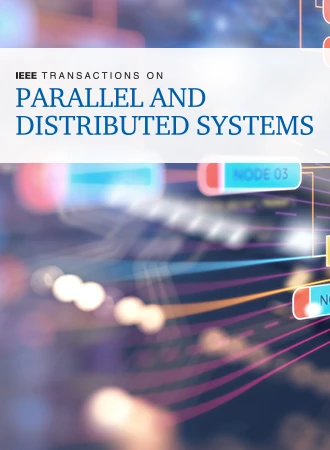Dissecting the Software-Based Measurement of CPU Energy Consumption: A Comparative Analysis
IF 5.6
2区 计算机科学
Q1 COMPUTER SCIENCE, THEORY & METHODS
IEEE Transactions on Parallel and Distributed Systems
Pub Date : 2024-11-06
DOI:10.1109/TPDS.2024.3492336
引用次数: 0
Abstract
Information and Communications Technologies (ICT) are an increasingly important contributor to the environmental crisis. Computer scientists need tools for measuring the footprint of the code they produce and for optimizing it. Running Average Power Limit (RAPL) is a low-level interface designed by Intel that provides a measure of the energy consumption of a CPU (and more) without the need for additional hardware. Since 2017, it is available on most x86 processors, including AMD processors. More and more people are using RAPL for energy measurement, mostly like a black box without deep knowledge of its behavior. Unfortunately, this causes mistakes when implementing measurement tools. In this article, we propose to come back to the basic mechanisms that allow to use RAPL measurements and present a critical analysis of their operations. In addition to long-established mechanisms, we explore the suitability of the recent eBPF technology (formerly and abbreviation for extended Berkeley Packet Filter) for working with RAPL. We release an implementation in Rust that avoids the pitfalls we detected in existing tools, improving correctness, timing accuracy and performance, with desirable properties for monitoring and profiling parallel applications. We provide an experimental study with multiple benchmarks and processor models to evaluate the efficiency of the various mechanisms and their impact on parallel software. We show that no mechanism provides a significant performance advantage over the others. However, they differ significantly in terms of ease-of-use and resiliency. We believe that this work will help the community to develop correct, resilient and lightweight measurement tools.剖析基于软件的 CPU 能耗测量:比较分析
信息和通信技术(ICT)对环境危机的影响日益严重。计算机科学家需要一些工具来测量他们编写的代码的足迹,并对其进行优化。运行平均功耗限制(RAPL)是英特尔设计的一个低级接口,无需额外硬件即可测量 CPU 的能耗(以及更多能耗)。自 2017 年起,包括 AMD 处理器在内的大多数 x86 处理器都可以使用它。越来越多的人开始使用 RAPL 进行能耗测量,但大多像黑盒子一样,对其行为缺乏深入了解。不幸的是,这导致在实施测量工具时出现错误。在本文中,我们建议回到允许使用 RAPL 测量的基本机制,并对其操作进行批判性分析。除了历史悠久的机制外,我们还探讨了最新的 eBPF 技术(前身是扩展伯克利数据包过滤器的缩写)与 RAPL 的适用性。我们发布的 Rust 实现避免了我们在现有工具中发现的缺陷,提高了正确性、定时准确性和性能,具有监控和剖析并行应用程序的理想特性。我们使用多个基准和处理器模型进行了实验研究,以评估各种机制的效率及其对并行软件的影响。我们发现,与其他机制相比,没有任何一种机制能提供显著的性能优势。然而,它们在易用性和弹性方面却有很大不同。我们相信,这项工作将有助于社区开发正确、灵活和轻量级的测量工具。
本文章由计算机程序翻译,如有差异,请以英文原文为准。
求助全文
约1分钟内获得全文
求助全文
来源期刊

IEEE Transactions on Parallel and Distributed Systems
工程技术-工程:电子与电气
CiteScore
11.00
自引率
9.40%
发文量
281
审稿时长
5.6 months
期刊介绍:
IEEE Transactions on Parallel and Distributed Systems (TPDS) is published monthly. It publishes a range of papers, comments on previously published papers, and survey articles that deal with the parallel and distributed systems research areas of current importance to our readers. Particular areas of interest include, but are not limited to:
a) Parallel and distributed algorithms, focusing on topics such as: models of computation; numerical, combinatorial, and data-intensive parallel algorithms, scalability of algorithms and data structures for parallel and distributed systems, communication and synchronization protocols, network algorithms, scheduling, and load balancing.
b) Applications of parallel and distributed computing, including computational and data-enabled science and engineering, big data applications, parallel crowd sourcing, large-scale social network analysis, management of big data, cloud and grid computing, scientific and biomedical applications, mobile computing, and cyber-physical systems.
c) Parallel and distributed architectures, including architectures for instruction-level and thread-level parallelism; design, analysis, implementation, fault resilience and performance measurements of multiple-processor systems; multicore processors, heterogeneous many-core systems; petascale and exascale systems designs; novel big data architectures; special purpose architectures, including graphics processors, signal processors, network processors, media accelerators, and other special purpose processors and accelerators; impact of technology on architecture; network and interconnect architectures; parallel I/O and storage systems; architecture of the memory hierarchy; power-efficient and green computing architectures; dependable architectures; and performance modeling and evaluation.
d) Parallel and distributed software, including parallel and multicore programming languages and compilers, runtime systems, operating systems, Internet computing and web services, resource management including green computing, middleware for grids, clouds, and data centers, libraries, performance modeling and evaluation, parallel programming paradigms, and programming environments and tools.
 求助内容:
求助内容: 应助结果提醒方式:
应助结果提醒方式:


